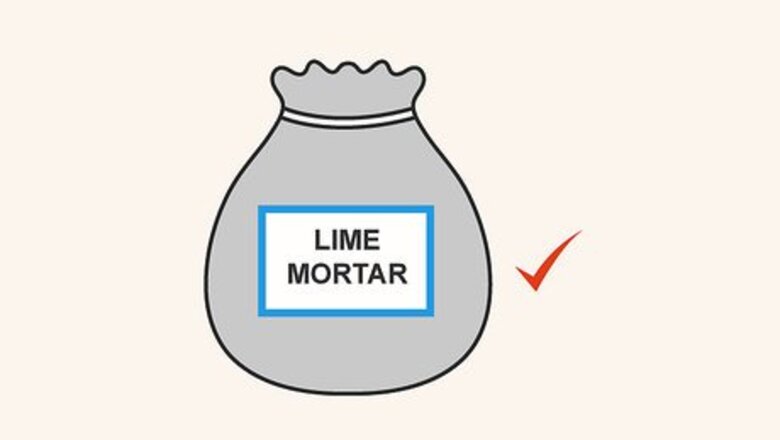
views
Making the Mortar
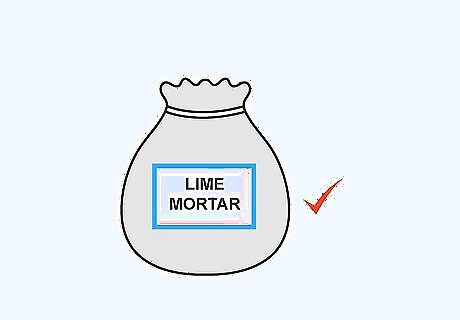
Purchase a bag of lime mortar. Many types of mortar are available for purchase, but lime mortar is ideal for pointing walls. Lime mortar should be available for purchase at a local hardware store or gardening center. Landscaping-supply businesses will also likely sell lime mortar. It’s difficult to estimate how much lime mortar you’ll need to point your wall. It depends on how badly your wall is in need of repair, and whether you’ll be pointing 1, 10, or 100 cracks. That said, if you’re pointing a relatively small wall that’s 3.3 feet (1 m) high by 6.6 feet (2 m) (2 m) wide, you’ll need about 40 lb (18 kg) of lime mortar. A 60-pound (27-kg) bag of lime mortar will usually cost around $5–$10 at your local hardware or home-supply store. You’ll likely need to buy your own sand too, although this should be inexpensive. Bring a sample of the existing mortar to the store with you so you can get an exact color match.
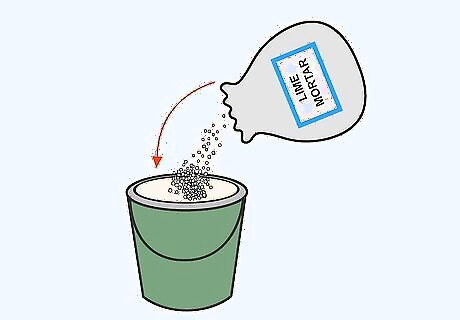
Pour mortar into a bucket or wheelbarrow. The amount of mortar you pour out depends on how many joints you’ll need to point. As a general rule of thumb, prepare enough mortar to last you 30 minutes. If you make an hour’s worth of mortar, it may dry out before you’ve had time to use it. Start small: try only using about 1 cup (240 mL) of mortar to begin with. Either a bucket or wheelbarrow will give you plenty of space to mix the mortar in. If you need to make a large amount of mortar—or are mixing far from the wall you’ll be pointing—opt for the wheelbarrow.
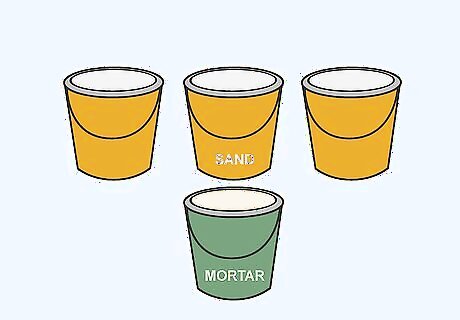
Add sand at a 3:1 ratio. Sand will give the mortar a gritty consistency and help it have stronger cohesion. While there’s some flexibility in the amount of sand you use relative to the amount of mortar, a 3:1 ratio is generally best for brick walls. So, if you’ve poured out one small bucket-full of mortar, add three small buckets-full of sand. You can purchase sand at a local hardware store.
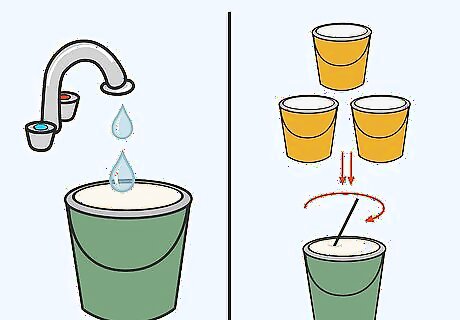
Add water and stir the mortar. Pour in about ½ a bucket of water. Then, use your trowel to mix the mortar, sand, and water all together. When mortar is the right consistency, it should be firm enough to hold its shape. The mortar should not slump or flow like a liquid. Add only a small amount of water at first. It’s easy to pour more water into dry mortar, but if you add too much water all at once, you’ll have to pour in much more mortar and sand to absorb all the extra water. If you're mixing the mortar in a wheelbarrow, mix the mortar using a front to back motion. To speed up the mixing process, use a mixing paddle attached to a drill to stir the mortar. Make sure you wear safety glasses, a mask with ventilation, gloves, and long pants when you're working with mortar.
Applying the Lime Mortar
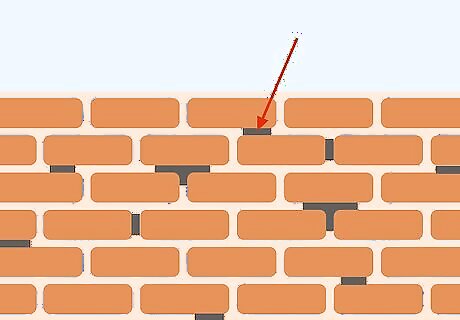
Look for gaps between bricks. If you’re pointing a wall, you should already have constructed a sturdy wall using mortar between all of the bricks. However, there may be small gaps or cracks where the mortar has fallen out from the joints between the bricks. Run your eyes over the entire wall to find these cracks. Check for these gaps in both the bed joints (horizontal) and cross joints (vertical).
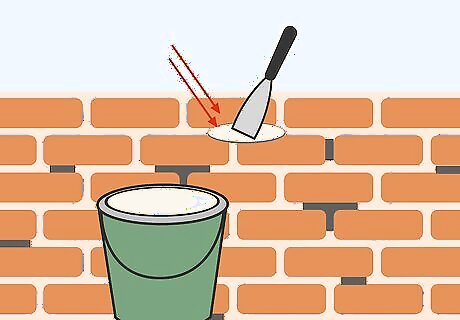
Press mortar into the cracks. Once you find a crack, scoop up about ¼ cup (4 ounces) of mortar on your trowel. Use a pointing tool or other narrow trowel to scrape the mortar into the gap in the joint. Press the mortar firmly in place, so that it will not fall back out of the gap. You’ll be able to purchase a variety of trowel sizes at any local hardware store or gardening center. You can also wear gloves and press the mortar into the cracks using your thumbs.
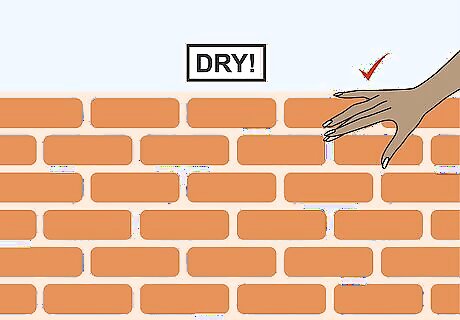
Let the mortar dry until it’s firm to the touch. The mortar you’ve just scraped into the brick joints needs to be partially dry before you start pointing. If you point the mortar prematurely, you won’t be able to correctly shape the mortar. Wait about 20 or 30 minutes. After about 20 minutes, test the mortar to see if it’s hardened sufficiently. Press your thumb firmly into the mortar you’ve added to a joint. Your thumb should leave a dent in the mortar, but it should not displace any gooey, wet mortar.
Shaping the Joint
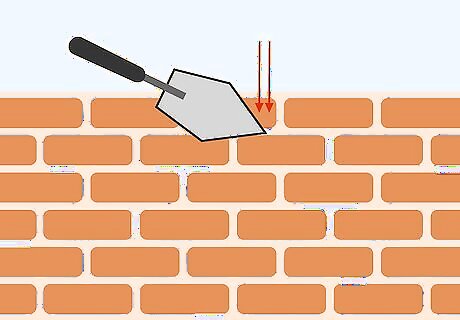
Press a pointing trowel into the joint. Once the mortar is sufficiently dry, push your narrow pointing trowel firmly into the mortar that you’ve just applied. If you don’t have a pointing trowel, or would prefer for the finished mortar to have a concave curve to it, you can use a 6-inch (15-cm) section of rubber hose instead. If you don’t have either a pointing tool or a length of rubber hose, you can even use a bucket handle to point the mortar in a joint.
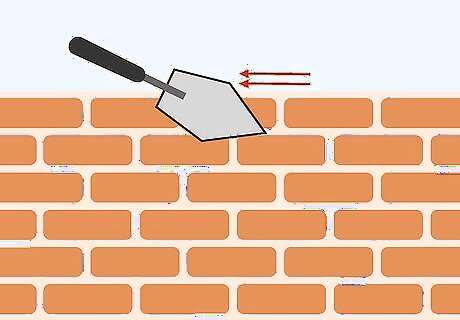
Drag the pointing trowel along the joint. Keep applying pressure as you slide your trowel or rubber hose along the mortar in the joints. This will compact the mortar (making it more weather resistant) and give it a concave shape. If you’ve added mortar to both vertical and horizontal joints, be sure to point the cross joints first and the bed joints second. The outer surface of the joint should be indented from the surface of the bricks. You don’t want the mortar from the joint to protrude out past the brick face.
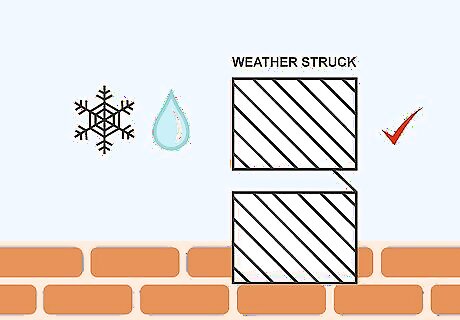
Use a “weather struck” bed joint for exposed walls. If your wall is in an exposed area where it will receive a lot of wind, rain, or snow, you can use a weather struck joint. To make a weather struck bed joint, press your pointing trowel at an angle, so that the top edge is indented into the mortar and the lower edge is away from the wall. Then run the trowel along the mortar and press the joint into shape. A weather struck joint will protect your brick wall from absorbing water. The angle of the joint will deflect moisture and force rainwater to run down the surface of the bricks, rather than soaking into the mortar. Weather struck joints are only used on bed joints. There is no corresponding pointing angle for vertical joints. For a professional finish, smooth out the joint and surrounding area with a medium-soft mason brush when it's about halfway dry. Wait for the mortar to fully dry after this step. Give it at least another 30 minutes.
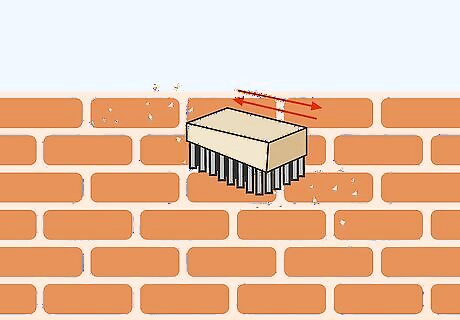
Brush over the entire wall. Once the mortar has dried, you’re ready for the final step. To finish the pointing process, take your wire brush and rub it over the entire area you’ve pointed. This will remove any excess mortar that may have gotten onto the bricks, and will even out the texture of the mortar in the joint. Be careful when you're using the wire brush. If there's moisture still in the mortar, the wire brush may pull the mortar out.


















Comments
0 comment